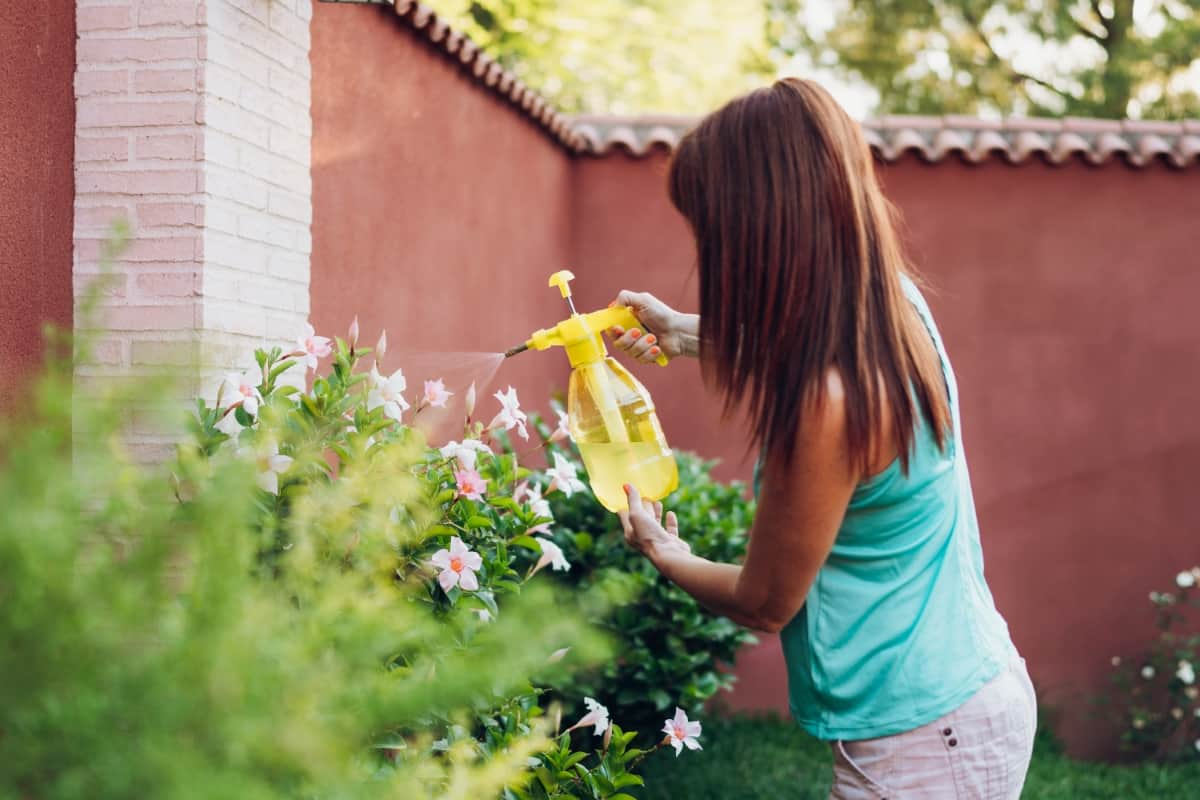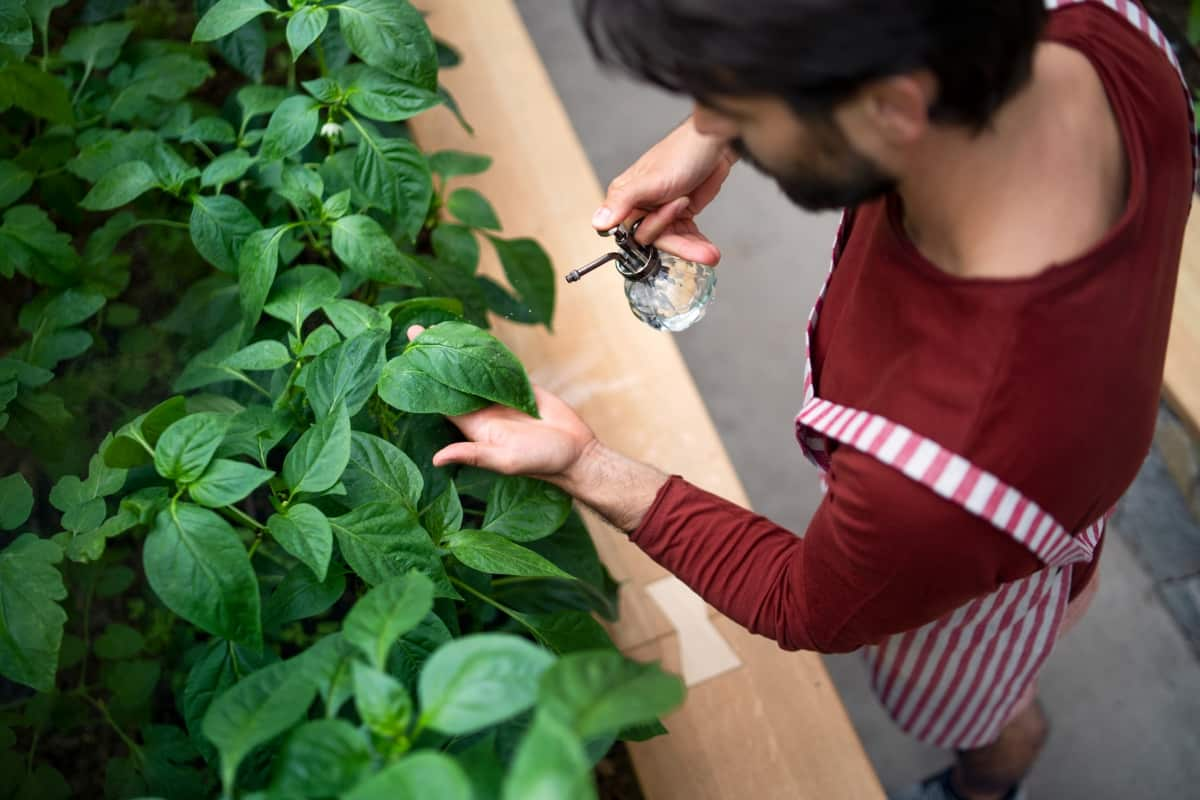It is a homemade spray made from organic ingredients that repel insects naturally. These ingredients can include essential oils such as peppermint, lavender, or eucalyptus, which are known for their insect-repelling properties. Using natural bug repellents is not only beneficial for your garden but also for your health and the environment. Making your bug repellent spray can save you money in the long run compared to purchasing commercial products.

DIY Natural Bug Repellent Spray Recipe
Understanding the Importance of Natural Bug Repellents
Using natural bug repellents is not only good for your garden but also the environment. Unlike chemical-based insecticides, natural bug repellents are made from organic ingredients that are safe for both plants and beneficial insects. Furthermore, using natural bug repellents reduces your exposure to harmful chemicals.
By opting for natural alternatives, you can ensure that what you grow in your garden is free from potentially harmful residues. Moreover, making your DIY bug spray allows you to save money in the long run while being creative with different essential oil combinations depending on what works best for your garden.
Essential Oils are the Key Ingredients for DIY Bug Repellent Sprays
- Citronella oil – Its strong and refreshing scent acts as a powerful deterrent for mosquitoes and other biting insects. Another effective option is lemon eucalyptus oil, which contains a compound called PMD that has been shown to repel mosquitoes effectively.
- Lavender oil – it also works wonders in keeping bugs away. It has a sweet floral scent that bugs find unpleasant, making it an excellent addition to your homemade bug spray recipe. Peppermint oil is another great choice due to its strong smell that annoys insects like ants and spiders.
- Tea tree oil – This versatile essential oil can help protect your garden plants from pests like aphids and whiteflies.
Step-By-Step Guide to Making Your Own Natural Bug Repellent Spray
Creating natural bug repellent spray is not only easy but also a cost-effective way to protect your garden plants from pesky insects. Follow this step-by-step guide to make your very own homemade organic insect repellent. Firstly, gather the necessary ingredients. Essential oils are the key components of DIY bug repellents, so choose ones that are known for their insect-repelling properties.
Some popular options include citronella, lemongrass, lavender, and peppermint. Next, you’ll need a base oil or alcohol to dilute the essential oils. Common choices include almond oil or witch hazel. These will help carry and disperse the essential oils effectively. In a clean spray bottle, combine approximately 10-20 drops of each chosen essential oil with 2 ounces of base oil or alcohol. Adjust the number of drops based on your preference and sensitivity level.
Shake well to ensure all-natural ingredients are mixed. It’s important to remember that these homemade sprays may require more frequent application than store-bought chemical alternatives. When using your DIY bug repellent spray in the garden, be sure to target both leaves and stems, as insects tend to hide in various areas of plants. Reapply every few days or after rainfall for optimal effectiveness.
Exploring Different Essential Oil Combinations for Bug Repellent Sprays
Lemon eucalyptus oil is a popular choice due to its high concentration of citronella, which mosquitoes detest. Adding peppermint oil can further enhance the mosquito-repellent effect while giving your spray a refreshing scent. If you’re dealing with pesky ants or spiders in your garden, consider using tea tree oil combined with cedarwood oil.
Both of these oils have strong insecticidal properties and can help keep unwanted critters at bay without harmful chemicals. For those looking for an all-purpose bug-repellent spray, try mixing equal parts of lemongrass oil and rosemary oil. This combination not only repels mosquitoes but also works against ticks and fleas.
The Benefits of DIY Natural Bug Repellents for Your Health and the Environment
By using natural ingredients like essential oils, you can create an effective bug repellent spray. Furthermore, DIY bug repellents are eco-friendly alternatives to traditional pesticides. Synthetic insecticides can have devastating effects on the environment, contaminating soil and water sources.
In case you missed it: DIY Catnip Tea Spray for Repelling Aphids, Squash Bugs, and Cockroaches

In contrast, natural bug sprays made with organic ingredients have minimal impact on ecosystems. Another advantage of making your bug repellents is the cost savings they provide. By utilizing items already available in your pantry and mixed with essential oils, you can make a highly effective spray at a fraction of the cost.
Comparing the Effectiveness of Homemade Bug Repellent Sprays
It’s important to understand that different bugs may respond differently to various ingredients. For instance, while essential oils like citronella and lemongrass are effective against mosquitoes, they may not work as well for other pests such as aphids or caterpillars. Another factor to consider is the concentration of active ingredients in your homemade spray.
Some recipes call for higher concentrations of certain oils or spices, which can increase their effectiveness. Additionally, timing plays a role in determining the efficacy of homemade bug repellents. Applying them regularly and at appropriate intervals will ensure consistent protection for your plants throughout the growing season.
Tips for Storing and Using Homemade Natural Bug Repellents Safely
- Store in Proper Containers: After making your bug repellent spray, transfer it into dark-colored glass bottles with tight-fitting lids. This will help preserve the potency of the ingredients and prevent any leakage or contamination.
- Label Clearly: Always label your homemade bug repellents clearly with the date of preparation and a list of ingredients used. This way, you can easily identify them and avoid confusion.
- Keep Out of Reach: If you have children or pets at home, make sure to store your bug repellents in a secure cabinet or shelf that is out of their reach.
Enhancing the Aroma of Your DIY Bug Repellent Spray with Additional Ingredients
There are many natural ingredients you can add to your DIY mixture that repels bugs. The popular option is adding a few drops of lavender essential oil. Not only does lavender have calming properties, but it also helps keep pesky insects at bay. The sweet floral scent will make spraying your garden plants an enjoyable experience. If you prefer a citrusy fragrance, consider using lemon or orange essential oils.
In case you missed it: DIY Lavender Oil Spray for Deterring Fleas, Ticks, and Moths from Gardens

For those who love herbal aromas, try incorporating rosemary or peppermint essential oil into your mixture. Both herbs have strong scents that mosquitoes and other pests find repulsive while leaving behind a refreshing smell that humans enjoy. Another option is to infuse fresh herbs such as basil or mint directly into the mixture. This way, you’ll achieve both insect protection and an enticing herby aroma.
Common Concerns and Misconceptions About Natural Bug Repellents
The main concern is whether homemade bug repellent sprays are as effective as commercial products. While it is true that natural repellents may not provide the same level of immediate knockdown as synthetic chemicals, they can still effectively deter many insects from your garden plants. It’s important to understand that natural bug repellents work by creating an unpleasant atmosphere for pests rather than killing them outright.
Another misconception is that natural bug sprays are harmful to beneficial insects. When used correctly, homemade insect repellents made with essential oils should not harm beneficial insects. Be sure to apply the spray directly on plant foliage rather than indiscriminately spraying it in the air or on flowers where pollinators may come into contact with it.
Frequently Asked Questions (FAQ) on Natural Bug Repellent Sprays
What Ingredients Do I Need for Bug Repellents?
The ingredients needed for a homemade bug-repellent spray can be found in your pantry or local grocery store. Some common ones include essential oils like citronella, eucalyptus, and peppermint, as well as vinegar and water.
How Often Should I Apply the Bug Repellent Spray?
It’s best to apply the homemade insect repellent every week or after heavy rainfall when bugs tend to be more active in gardens.
Are There Any Precautions I Should Take When Using This Homemade Solution?
While natural bug sprays are generally safe, it’s always a good idea to test them in a small area before applying them all over your garden plants.
What Types of Bugs Will This Homemade Solution Repel?
This natural recipe works against common garden pests, including mosquitoes, aphids, ants, and flies.
In case you missed it: How to Stop Insects Eating Plant Leaves Naturally: DIY Home Remedies for Controlling Leaf-Eating Insects

Conclusion
Making your own natural bug repellent spray at home can save you money compared to obtaining commercial products. Many ingredients used in DIY sprays, like essential oils and vinegar, are readily available and affordable. Plus, you have control over the quality and quantity of each ingredient used. The main benefit of using a natural bug repellent spray for garden plants is that it provides an effective and chemical-free way to protect your precious plants from harmful pests.
- Beneficial Insects in Pest Management
- Natural Solutions for Pest Control in Flower Gardens
- Types of Fungicides Used in Agriculture
- Common Issues in the Fruit Development Stage of Pomegranate Farming
- Fruit Development Issues in Papaya: Easy Solutions and Treatment
- Soil-Borne Diseases and How to Protect Your Plants
- Practices to Prevent Disease Spread in the Garden
- From Wilted to Thriving: How to Treat Root Rot Naturally in Houseplants
- Natural Remedies to Cure Brown Spots on Fig Tree Leaves